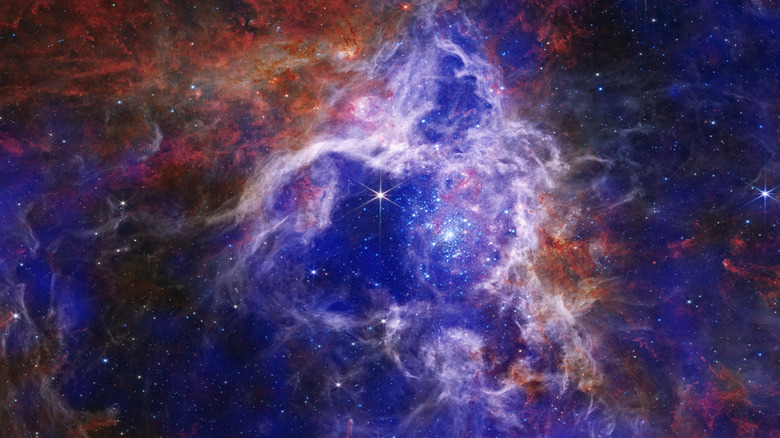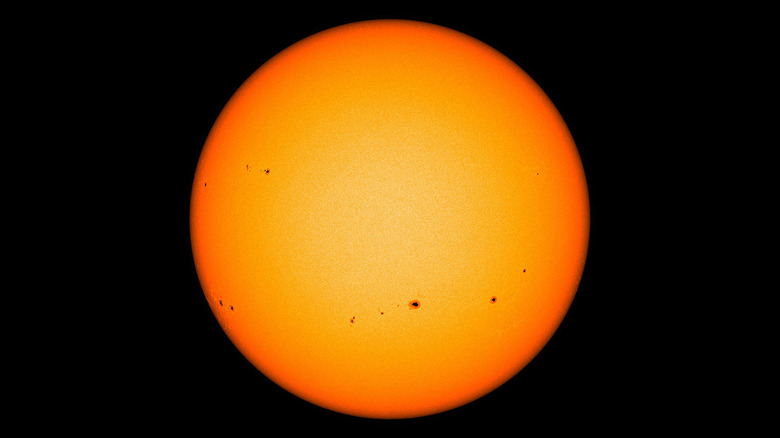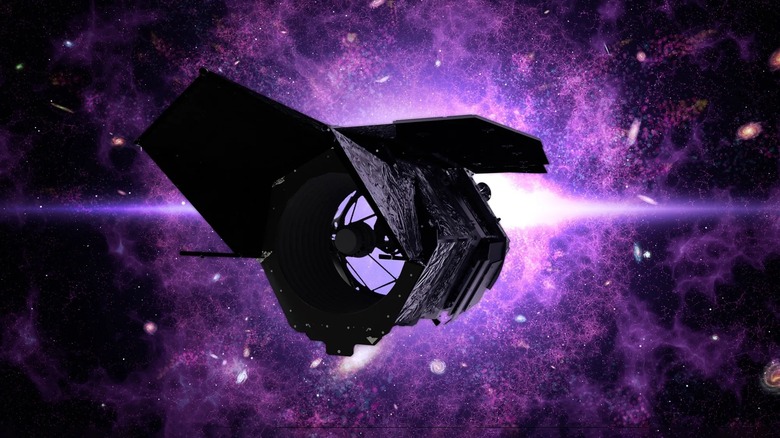Why It's So Difficult For Scientists To Measure The Age Of Stars
With the evolving technology of space telescopes allowing us to peer out beyond our solar system and see distant planets, black holes, and even some of the oldest galaxies to exist, you might imagine that stars would be fairly simple to understand. Astronomers have observed thousands of stars, of all different types, both in our galaxy and beyond. They can often tell how big a star is, how brightly it shines, and what it is composed of. However, there's one aspect of stars that is still surprisingly hard to determine: how old a given star is.
The basic life cycle of stars is well understood. They have a bright, chaotic phase as youngsters, before settling into a long, more moderate phase as adults — also known as main sequence stars, like our sun. When they eventually run out of fuel, they can puff up and become dim and cool, before eventually collapsing to a core.
However, during that long period of maturity, when the star is in its middle age, it's hard to tell how old it is. Stars tend to be stable during this time, so there aren't many obvious differences between stars that are 1 billion years old and those that are 10 billion years old, or even older. What astronomers do know is that more massive stars tend to burn through their material more quickly, so they have shorter lives.
Looking at a particular star in the sky, and then figuring out how old it is, remains a challenge. But astronomers have a plan for figuring this out.
Using rotation to figure out stellar ages
One potential way to determine a star's age is to look at the speed at which it rotates. When stars are born, they rotate very quickly, but over time they slow down. This happens because the star gives off charged particles, called stellar winds, which interact with the magnetic field. As these two interact, they cause the star to gradually slow rotation in an effect called "magnetic braking."
The effect isn't simple, though. A star that spins very fast will have a strong magnetic field, and it will slow down faster. However, over time stars tend to follow a similar evolution, so by the time a star is one billion years old, it will spin at around the same rate as other stars of a similar mass and a similar age.
This means that if scientists can measure both the rotation speed and the mass of a star, they can estimate its age. To measure rotation, they look at dips in brightness caused by cooler regions on a star called star spots (like sun spots on our sun).
Scientists, like Zachary Claytor from the University of Florida, are working on a program to identify a star's rotation time using AI. First, they had to train a neural network on simulated data, so it can analyze real data in the future. "This program lets the user set a number of variables, like the star's rotation rate, the number of spots, and spot lifetimes," Claytor explained. "Then it will calculate how spots emerge, evolve, and decay as the star rotates and convert that spot evolution to a light curve — what we would measure from a distance."
Using the Nancy Grace Roman Space Telescope to figure out stellar ages
To measure real star rotations, scientists will need a powerful instrument. And this is what astronomers want to do with a new telescope to be launched in 2027, the Nancy Grace Roman Space Telescope (known as Roman).
Roman will observe millions of stars in a huge survey, looking toward the bulge at the center of our galaxy which is full of stars. It will look for changes in brightness in these stars — which could indicate many things, from the presence of an exoplanet to a star spot which can be used to learn about rotation.
By combining data from Roman with AI models like the one Claytor is working on, researchers hope to get data on stellar rotation at a large scale.
"We can test which things matter and what we can pull out of the Roman data depending on different survey strategies. So when we actually get the data, we'll already have a plan," said Jamie Tayar of the University of Florida, who is also working on the program for identifying light curves that can be used to measure rotation. "We have a lot of the tools already, and we think they can be adapted to Roman."


